I'm unexpectedly spending my summer at home in Visakhapatnam (Vizag), India, and I'm certainly making the most of it. I've been working on redesigning my website, I've been testing and improving Philo for the Office of Communications, I've been getting a headstart on my honors project, and I'm taking the GRE next month. I've also been trying to learn some of my grandmother's recipes that have been passed through the generations.
In my grandmother's time, snacks weren't sold at stores, so every family made their own. Cooking in India (and I believe, most of Asia) is a very labour-intensive process, so this took some doing. These days, you can buy most of these old-time snacks at shops called "home foods" in India, but I wanted to learn how to make them from scratch. We've made six different snacks until now - jantikalu, vatthudu garelu, sakinalu, bobbattulu, chakkarapanalu, and gavvalu, both savoury and sweet. I'm going to walk you through the process of making sakinalu.
My notes on the recipe, written in a mixture of English and Telugu:

First, we took some rice, soaked it for a few hours, and put it through the mixer. When my grandmother last made this recipe, more than twenty years ago, the wet rice was ground by hand, using a large mortar and pestle. We figured this was too impractical. We then sifted the rice powder to make sure it was fine enough, and re-ground the rest until it could all be sifted.
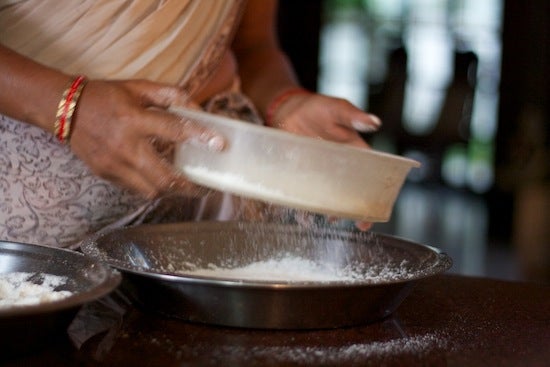
To this fine rice powder, we added a couple of tablespoons each of salt and carom seeds (vaamu or ajwain), and one part sesame seeds (nuvvu pappu) for every three parts of rice powder. Then we added about a tablespoon of butter (venna) and enough water for it to form a coarse dough.

Our dough seemed a bit too watery, so we added some more sesame seeds. Then we spread out a big cloth towel on the dining table, and piped the dough into spirals. This is a lot tougher than it looks, and no one but my grandmother could get it quite right. To pipe the dough into spirals, you have to take a small ball of it, take a bit of oil, and just try and lay it out into thin spirals.
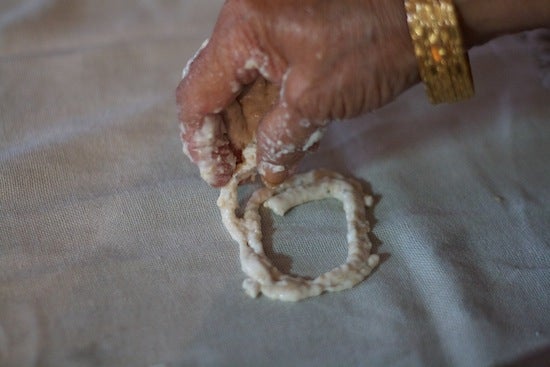

After unsuccessfully trying to shape one of those, my mom washed (and dried) her hands of the whole business.

My grandmother made a lot of them...
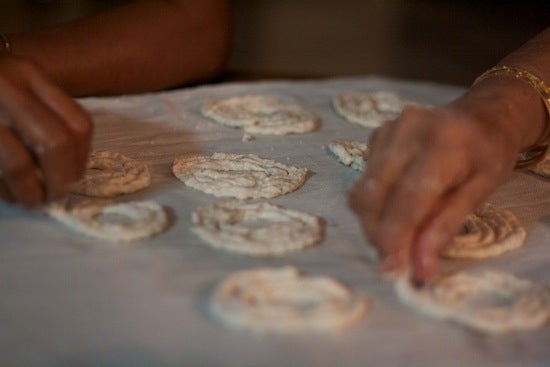
Then we used a metal disc to carefully get the raw sakinalu off the cloth...
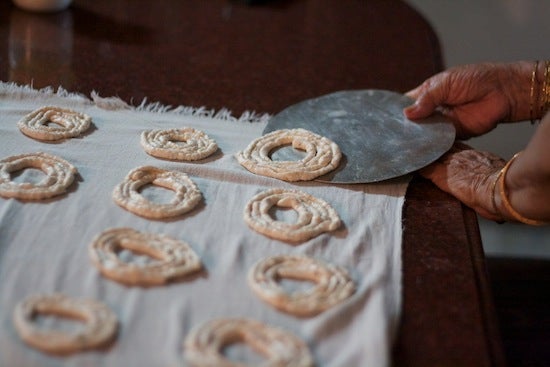

And then we deep-fried them!

And here they are:

Don't they look delicious?
I don't have a picture of my grandmother and the sakinalu, but I have a picture with her and one of the other snacks we made (vatthudu garelu).
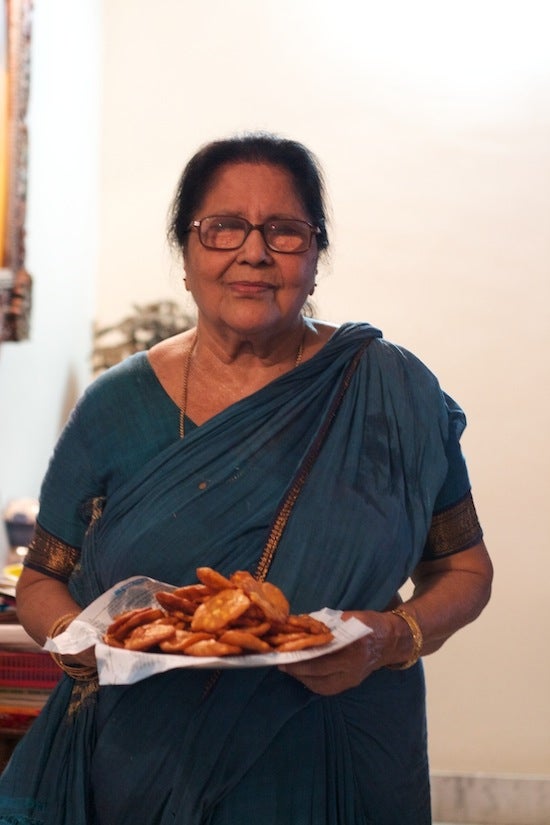
I think it's important to document the past, and not only am I learning these old recipes from my grandmother, I'm also learning a lot about how things worked in the past from conversations sparked by what we're doing. Plus, I'm spending quality time with my grandmother and being able to eat the results for days! It's great.














